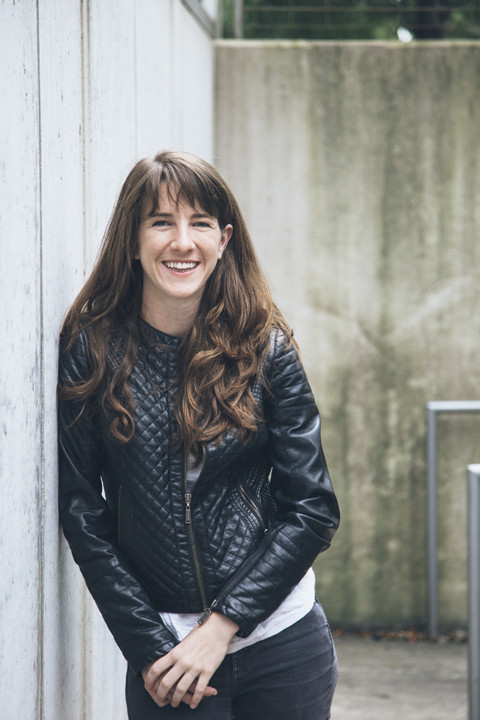
Kelly Lohr’s academic journey thus far seems to be both straightforward—and anything but. She keeps heading east, first traveling from her home in Greeley, Colo., to Chicago to enroll at Illinois Tech and then on to Providence, R.I., where she is currently a graduate student in the industrial design program at Rhode Island School of Design. A self-described “designer of ideas,” Lohr (MSE ’13) was only the second woman at Illinois Tech to be elected president of the Student Government Association and founded a coffee club at the university as part of her quest to discover venues in Chicago where Illinois Tech students could gather to exchange ideas and talk.
For someone so focused, Lohr seems to delight in detours. And for someone so comfortable with change, there are certain things that definitely get her attention—like using old-fashioned felt as a design material. The simple textile became the cozy covering of Whaley, a ride-on toy for toddlers, in one of Lohr’s graduate student projects. Noting that women use modified bungee cords as hair elastics, she repurposed the colorful bands as the basis of StripeCatch, her cell phone case that combines form and function.
IIT Magazine reached out to the aspiring industrial designer to share some thoughts at the corner of engineering and good design.
Is industrial design a logical steppingstone to where you see yourself being down the road?
I knew in high school that I wanted an engineering background that would support the work I would someday do as a designer. I saw industrial design and material science as very logical partners, and in many ways they are; however, trying to make it all work logically in reality is not so straightforward. Understanding fracture mechanics helps me to design stronger joints or more functional perforations, and those moments are small joys. I’m in a stage of my career where research and learning are very important to me—designing experiments, testing unknowns, and using evidence to validate decisions. It's a really important process that both designers and engineers need, but they excel in very different ways. I feel lucky to have seen both interpretations.
What manages to get over your threshold of attention when you walk down a street?

I probably notice about 20 percent of what is actually going on; I’m no Sherlock Holmes and this world can be overwhelming. I do tend to notice things that are related to what I’m researching. So for a while I was researching felt, and I noticed all of the weird ways felt was being used in the world; it was a charm shaped like a horse on a friend’s backpack, padding to protect a wood floor from being scratched, the main material of a chic fall coat, and cheap prototyping material for one of my classmates. I was designing a child’s toy and chose felt to evoke warmth, softness, and protection. It helps to always have some research question in the back of your mind, like “what are all the ways people use felt in everyday life?” It’s combining insights about people with a vision of how to act on those insights that makes design thinking a desired capability in business and worthwhile for universities to include in curricula. Not to mention, the process is really enjoyable, on top of being practical. In a universal sense, good design is intentional about which audience it’s serving and considerate of the needs of that audience. What I’m really delivering are insights and ways to move forward with them.
More Online
RISD: www.risd.edu